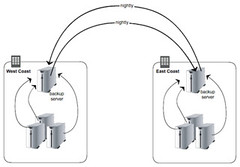Sponsored Post: Amazon, Zoosk, Booking, aiCache, Teradata Aster, Aerospike, Percona, ScaleOut, New Relic, NetDNA, Logic Monitor, AppDynamics, ManageEngine, Site24x7
 Tuesday, January 22, 2013 at 9:30AM
Tuesday, January 22, 2013 at 9:30AM 
Who's Hiring?
- The AWS Relational Database Service (RDS) automates management of relational databases in the cloud. We have a wide variety of customers and are part of many mission-critical applications, like the ones built by the 2012 Obama re-election campaign. If you're interested in joining a fast-growing service and team, please send your resume to rds-jobs@amazon.com.
- Hiring! Director of Site Operations at Zoosk. We’re looking for an innovator. Someone who wants to take site operations along with a smart team of Sys Admins to the next level. This is a very hands-on leadership role in a high-availability production environment. Full details here.
- We need awesome people @ Booking.com - We want YOU! Come design next
generation interfaces, solve critical scalability problems, and hack on one of the largest Perl codebases. Apply: http://www.booking.com/jobs.en-us.html
- Teradata Aster is looking for Distributed Systems, Analytic Applications, and Performance Architects. As a member of the Architecture Group you will help define the technical roadmap for the product.
- The New York Times is seeking a developer focused on infrastructure to join its newsroom development team. Read the full description here and send resumes to chadas@nytimes.com.
- New Relic is looking for a Java Scalability Engineer in Portland, OR. Ready to scale a web service with more incoming bits/second than Twitter? http://newrelic.com/about/jobs
Fun and Informative Events
- It's back! Join the MySQL Community at the annual Percona Live MySQL Conference and Expo in Santa Clara, April 22-25. This year's conference features an outstanding lineup of 92 speakers delivering 112 breakout sessions over three days!
Cool Products and Services
- aiCache creates a better user experience by increasing the speed scale and stability of your web-site. Test aiCache acceleration for free. No sign-up required. http://aicache.com/deploy
- New Benchmark shows Aerospike nearly 10x Faster than the Competition. Thumbtack Technology YCSB Benchmark shows Aerospike nearly 20x faster than Cassandra, Couchbase and Mongodb. Read it now!
- ScaleOut Software. In-memorry Data Grids for the Enterprise. Download a Free Trial.
- NetDNA, a Tier-1 GlobalContent Delivery Network, offers a Dual-CDN strategy which allows companies to utilize a redundant infrastructure while leveraging the advantages of multiple CDNs to reduce costs.
- LogicMonitor - Hosted monitoring of your entire technology stack. Dashboards, trending graphs, alerting. Try it free and be up and running in just 15 minutes.
- AppDynamics is the very first free product designed for troubleshooting Java performance while getting full visibility in production environments. Visit http://www.appdynamics.com/free.
- ManageEngine Applications Manager : Monitor physical, virtual and Cloud Applications.
- www.site24x7.com : Monitor End User Experience from a global monitoring network.
If any of these items interest you there's a full description of each sponsor below. Please click to read more...


















 This is a guest post by
This is a guest post by 